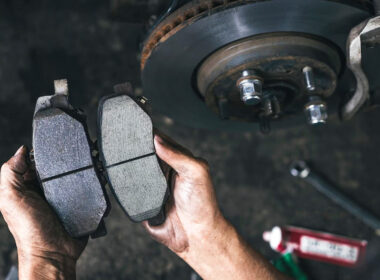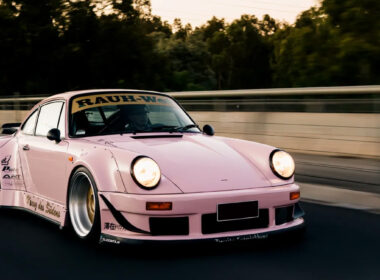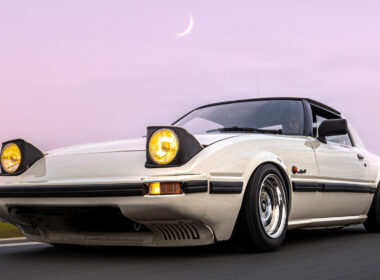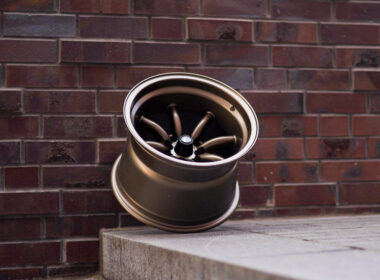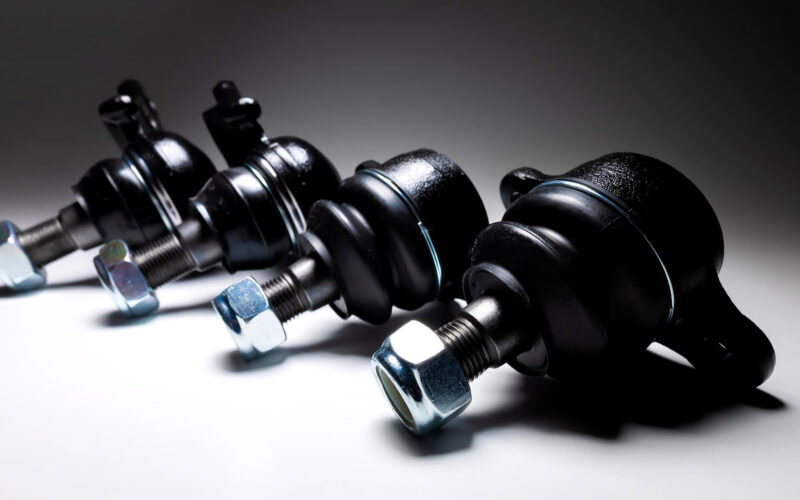Ball joints can make or break your suspension experience. You may have some of the best coilovers installed on your car or truck, but if your ball joints are worn out or misaligned with your suspension geometry, you’ll run into steering and NVH issues.
Like bushings, ball joints are consumable parts that facilitate movement between critical components. They play a vital role as they’re used to connect steering knuckles with control arms and they’re also seen on outer tie rod ends and sway bar end links.
Knowing how ball joints work, their different types, and when to replace them, will help you better maintain your suspension and steering system. It’ll also help you decide whether to go for an OEM replacement or an aftermarket ball joint when it’s time to change yours.
Purpose of Ball Joints

A ball joint is a flexible connection that allows movement between the parts it’s connected to in more than one direction.
Its bionic resemblance to virtually every ball-and-socket joint found in tetrapods and primates is unsurprising as it seems to be the most efficient way to enable free rotation in two planes.
Control arms utilize 2 such joints, freeing up the steering knuckles to move in 3 planes. Consequently, the wheels can steer from side to side and move vertically through the suspension’s range of travel.
Even tie-rod ends rely on ball joints to transmit force from the steering rack to the knuckles, causing the wheels to change direction.
What’s Inside?

Ball joints consist of a stud mated to a heavily polished steel ball that rotates within an injection-molded polymer socket. This makes for an ultra-low friction joint capable of smooth articulation even under load.
Not all ball joints are created equal, but they all work on the same principles and share similar internals. For example, some ball joints have zerk fittings through which you can inject grease while others don’t. Some feature polymer sockets; others use steel.
Your usual run-of-the-mill OE ball joints allow a limited range of movement with little to no headroom for modifications like lifted or lowered suspension. Conversely, many aftermarket ball joints are designed for performance applications.

They’re stronger, easier to maintain, and allow for a wider range of movement, making it possible to correct any unwelcome changes in suspension geometry that might crop up due to modifications like long travel kits or coilovers.
With all that in mind, here’s what you’ll find inside most ball joints:
- Ball stud: The star of the show. It’s a bolt-like cylinder connected to a steel ball that rotates within the greased socket and enables movement or articulation in 3 axes.
- Bearing: A polyurethane, nylon, or metal socket that encases the ball and aims to lower friction. When this part eventually fails, the ball joint is said to be worn out.
- Protective boot: A tough polyurethane shield that prevents water, dirt, and debris from entering the ball joint. This part protects the ball joint from corrosion and frictional wear.
- Housing: The outer layer of the ball joint; contains the bearing and the round end of the ball stud in that order. It resists wear both from the inside and the outside.
- Backing plate: A cover that shrouds the ball end of the joint; typically constructed from a strong material like steel.
- Spring washer: A retainer sandwiched between the backing plate and the socket or bearing.
- Tapered extension: The threaded part of the ball stud that’s supposed to accommodate the steering knuckle.
- Zerk: Not all ball joints feature this. Also called a grease nipple, the zerk provides an opening through which grease can be injected into the ball joint.
- Castle nut: The bit that holds the lower ball joint.
- Cotter pin: A preventative measure to keep the castle nut from unraveling.
Symptoms of Bad Ball Joints and Checking for Wear

Neglecting bad ball joints can have detrimental effects on your ride quality and can lead to extremely unsafe driving conditions for you and others around you.
The silver lining is that symptoms of bad ball joints are extremely noticeable and annoying, so much so that most car owners will want to get it rectified immediately.
Ball joints have 2 modes of failure: looseness and seizure. If the symptoms aren’t too pronounced and you want to check for either of these issues, here’s what needs to be done:
- Raise the car and work the wheel up and down and side to side. You want to check for free play, if you notice it and it’s prominent, it could indicate that you have loose joints.
- Disconnect the tie rod end and turn the wheel by hand. If it turns easily, you’re good, but if there’s a lot of resistance, you’re likely looking at seized-up ball joints.
Additionally, many ball joints have wear indicators in the form of pins, gaskets, or rings. When these are recessed into the housing, it indicates a significant amount of wear, at which point you should change them with urgency.
Other telltale signs of bad ball joints include the following.
Stiff or Sloppy Steering
Depending on whether your ball joints are loose or seized, you may experience different issues when steering your car.

Broken protective boots and loss of lubrication cause ball joints to dry out and seize up. When this happens, your steering will feel stiff, and hard to turn. Loose ball joints, on the other hand, lead to sloppy steering.
Since they play a vital role in connecting the steering knuckle to the control arms, if they’re loose, you’ll feel your steering wander, especially at high speeds.
When this happens, the car pulls to one side and any attempt to correct it causes it to pull the other way, see-sawing back and forth until you find and hold the center.
This means the car cannot center itself like it should, which can get very frustrating and even dangerous.
Clunking and Squealing
A faulty ball joint typically produces a cracking, clunking, popping, or squealing sound, which becomes more pronounced during acceleration or turning.
Encountering a pothole, a speed bump or driving over rumble strips will also trigger these noises. Over time, regardless of the specific noise, it tends to intensify.
Uneven Tire Wear

This can be attributed several other suspension issues. Uneven tire wear is never a good sign and it’s almost always cause for concern.
One good thing about this symptom is that it’ll start to appear long before your ball joints are fully worn out.
Stubborn Wheel Alignment
Excessively loose ball joints render even the finest wheel alignment methods incapable. If your car has bad ball joints, it will not maintain proper alignment.
This problem usually manifests long after other symptoms have appeared. It’s a critical warning and you should consult a mechanic without delay if you notice this.
Detached Wheel Hub

Total detachment of the wheel hub from the suspension is a clear sign of ball joint failure. However, this typically does not happen without several prior warnings.
It is usually the result of neglecting to repair your car when other signs and symptoms (like those mentioned above) emerge and progressively deteriorate.
Aftermarket Ball Joints

There are two scenarios in which you should consider replacing your ball joints:
- If you want to raise or lower your car/truck
- If your OEM ball joints are worn out and need replacement
On lifted trucks, maintaining proper driveline angles and CV axle angles is crucial to maintaining driveability and safety.
Raising the ride height necessitates the use of adjustable aftermarket parts such as differential relocation kits, subframe spacers, pinion angle correction shims, and most importantly control arms.
Most aftermarket control arms feature high misalignment uniball joints with the much-needed angularity required for 4×4 and lifted applications.
These ball joints prevent overextension and allow the aftermarket suspension to do its thing. They’re a godsend for pre-runner builds with long travel suspension setups.
On lowered cars, installing aftermarket ball joints is more about correcting lower control arm alignment than preventing overextension, but it really depends on the car and what type of suspension it has.
Adjustable or offset ball joints are also a great option for cars with little to no camber and caster adjustability. Some of these even have provisions for roll center correction.
Load-Carrying and Follower Joints

Ball joints can be classified as “follower” or “load-carrying” types; these are generic classifications and not some proprietary tech like “Delta joints” by Icon Vehicle Dynamics, for example.
The suspension design dictates the position of follower or load-carrying joints since they wear out at different rates. As the name suggests, load-carrying joints are stronger and more durable because they do the heavy lifting while follower joints are simply there to mediate motion.
Short-long-arm (SLA) suspension or double wishbone as it’s colloquially known, features both upper and lower ball joints, unlike MacPherson struts that only have a lower joint.

Most SLA designs have the coil spring mounted at the lower arm but many have it integrated into the upper arm. The coil spring’s mounting position decides which control arm bears the car’s weight.
If the spring is mounted on the lower arm, then that’s where the load-bearing joint needs to be. In this case, the follower joint should be on the upper arm. Conversely, if your SLA suspension has a UCA-mounted spring seat, the load-bearing joint will be on the upper arm.
MacPherson struts, on the other hand, only have a lower ball joint, which is the follower because the strut’s bottom end is connected directly to the knuckle while a bearing plate on the upper strut mount carries the car’s weight.

Load-bearing joints are further classified into 2 categories:
- Compression-loaded
- Tension-loaded
Load-bearing joints mounted on the UCA are under compression load while those mounted on the LCA are under tension.
In compression-loaded joints, the suspension’s forces push the ball stud into the housing while in tension-loaded joints, the forces act outward, attempting to pull the ball stud out of the socket.
The design and reinforcements within these ball joints are heavily influenced by where they’re supposed to be mounted.
This information will help you choose the right ones for your needs. That said, as long as you purchase ball joints meant for your exact vehicle you won’t have to worry about this stuff.
Serviceable and Non-Servicable Joints

Oil change intervals were once a reference point for many other maintenance items, especially chassis lubrication, which includes servicing ball joints and practically every grease fitting on the chassis.
But in the interest of longer service intervals, assembly line savings, tight clearances, and compact assemblies, most automakers have hopped onto the sealed-for-life bandwagon and done away with greaseable ball joints.
Sealed joints rely heavily on polymers and synthetic grease, which decreases raw material costs compared to metal-on-metal designs with zerk fittings and petroleum-based grease.
The savings add up, which makes sense for the manufacturers, their engineers, and their accountants. But what about car owners?

Many prefer the set-it-and-forget nature of sealed joints, not having to worry about them at all and only bothering with them during the next oil change interval. Others strongly favor serviceable parts and lean towards greaseable ball joints.
Interestingly, many aftermarket ball joints feature zerk fittings and metal-on-metal designs while others rely on lubricated-for-life, metal-on-polymer designs.
Which one you should go for depends on what you value and your willingness to get some grease under your fingernails. If you take pride in maintaining your vehicles yourself and find single-use parts wasteful, go for serviceable ball joints.
But if you can’t be arsed about maintenance schedules and you’d rather the dealership take care of your car, then sealed joints are the way to go.
Concluding Summary
Ball joints are crucial components of your car’s suspension setup as they facilitate movement between critical parts. Understanding their function, types, and signs of wear is essential for maintaining optimal suspension and steering performance.
Whether you decide to opt for aftermarket joints or OEM-replacements, maintaining them propery is key to ensuring safe and efficient driving.
